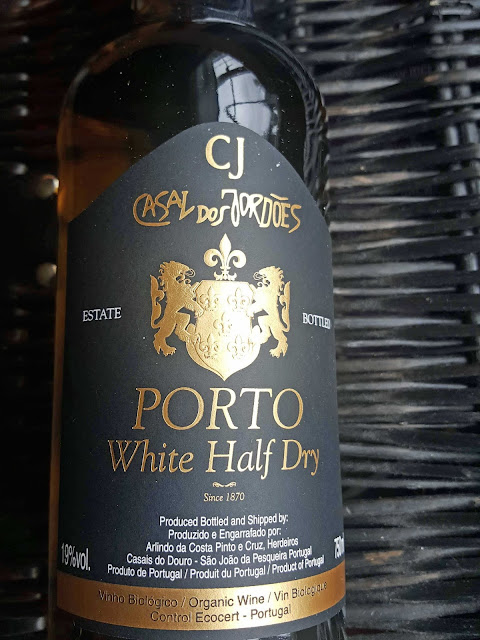Drinking through Portugal wine regions
with a Fonte do Ouro Tinto Dão.
Part IV (Vinho Verde, Lisboa and Alentejano).
Part 11 (Douro, Dão, Alentejo and Setubal.)
Foot Trodden (2021), a recent book on Portuguese wine, covers these eight regions: Minho, Douro, Dão, Bairrada, Colares, Ribatejo, Alentejo and Madeira (home of one of the most age-worthy wines). Other regions noted are Algarve, Setubal, Beiras Interior, Tránsmontano, Bucelas, VR Lisbon and Carcavelos. This is the start of an occasional focus on Portugal over the next month or two and I’ll try to get my hands on as many of the wines as I can. Any tips or help will be most welcome!
Fonte do Ouro Tinto Dão (DOC) 2020, 13.5% ABV, €17.25, O'Briens Wine
Like many Portuguese wines, this is a blend. All three grapes used are popular in the region. The Alfrocheiro adds depth of colour, Touriga Nacional (with its expressive violet scent) is considered to be the country’s finest, while Jaen is the local name for the what the Spanish call Mencía. By the way, Touriga Nacional probably started “life” in the Dão, mostly a granite plateau with the eponymous river running through it.
Importers and distributors O’Brien’s: A delicious red, showcasing the quality of winemaking in the Dão region of Portugal. Aged for 6 months in French oak it is a blend of indigenous grapes: primarily Touriga Nacional.
Dão is one of the oldest established wine regions of Portugal, located just south of the famous Douro Valley. The mountainous region is home to Touriga Nacional, the principle variety of port wine, and only became a DOC in 1990.
The region’s wine industry, for so long shackled by the dictator Salazar’s imposed cooperative system that rewarded quantity over quality, certainly needed the improvement in quality which has taken place in the last 30 years or so.
Ironically, Salazar himself had vines in the wild and rugged regiona and a string of coops were set up but the emphasis was always on quantity not quality. Even though Salazar departed in 1968 and the Carnation Revolution of six years later finally ended the influence of his policies and those of his like-minded successors, the Däo was in the doldrums until well into the 1990s when EU policy and its monetary help provided the kiss of life and the area began to put its reputation for producing what Jancis Robinson termed “some of the…. most uncharming wines in the world” behind it.
The top Dão wines are now some of the most highly rated in Europe, winning consistent praise on both sides of the Atlantic, says wine-searcher.com. “It is in the north of the country. It takes its name from the Dão river, along which the majority of the region's vineyards are located.” More praise from the World Atlas of Wine saying they are now “..far juicier, friendlier, more elegant wines”.
A government study in 2017 listed no fewer than 230 indigenous varieties in Portugal and, according to the marvellous Foot Trodden, there are many many more yet to be identified. No wonder there are so many blends in the country.
Our blend has a dark ruby colour. Fairly rich aromas of blackberry, dark cherry and plum. There’s a great mix of the fruit flavours on the palate, with a touch of spice, smooth with elegant tannins and a very satisfying and persistent finish. This supple and fresh wine, full of vitality, has spent six months in oak and should be served at 16 to 18 degrees and will go well with red meats.
Full of Dão character and Very Highly Recommended as is the book Foot Trodden!.
Sociedade Agrícola Boas Quintas, born in 1991, was part of the revival. It all began when Nuno Cancela de Abreu, representative of the 4th generation of a family with farming and winemaking tradition of more than 130 years, decided to devote all of his experience and all of his knowledge in viticulture and oenology, to the service of the project that would allow him to create high quality wines, full of character and personality. See more here.
Boas Quintas also make an excellent Fonte do Ouro white, a blend of Arinto and Encruzado, more details here.

















